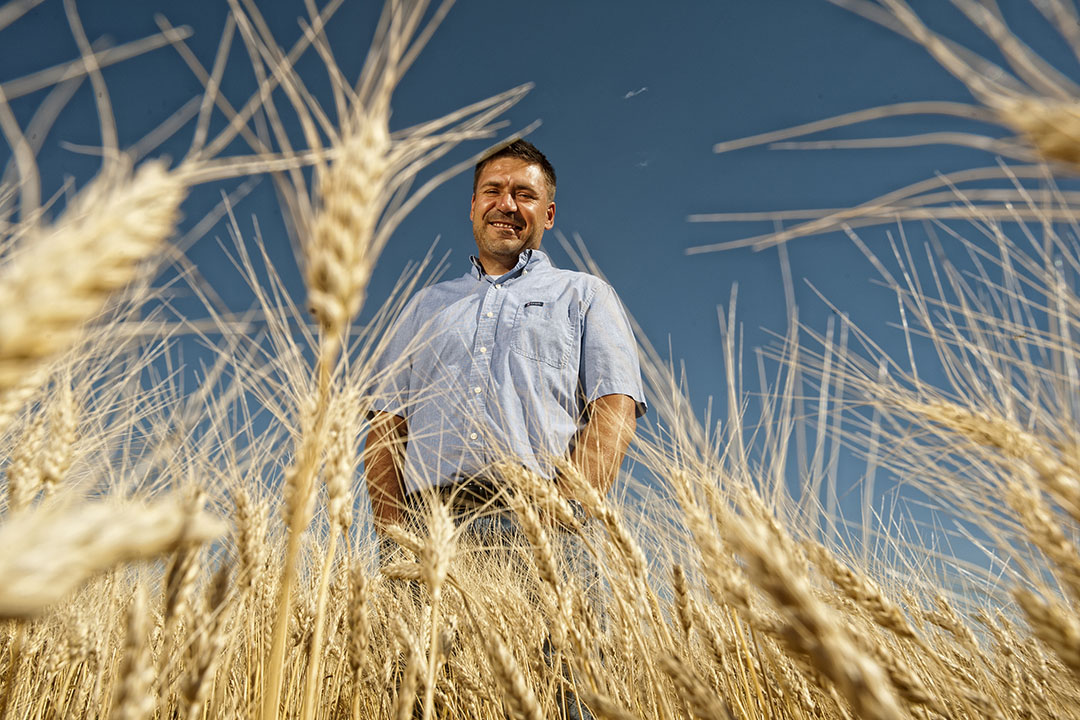
Wheat genome blueprint accelerates innovation
Breakthrough research in creating a comprehensive blueprint of the wheat genome will bring disruptive innovation to wheat breeding, predicts University of Saskatchewan crop scientist Curtis Pozniak, whose team played a key role in the successful international wheat genomics project.
By Sarath Peiris“The wheat blueprint will enable us to decipher the genetic basis of important traits in wheat, such as genes responsible for resistance to fungal diseases and pests. That is the disruptive part. What took years to do before can now be done in a matter of a few weeks,” said Pozniak, a wheat breeder at the Crop Development Centre (CDC) in the U of S College of Agriculture and Bioresources.
New knowledge generated by the International Wheat Genome Sequencing Consortium over the past 13 years is expected to have a huge impact on global food security, with the planet’s population projected to reach 9.6 billion within three decades. The findings were published recently in the journal Science.
“From a breeding perspective, the blueprint will enable us to develop DNA markers for breeding. These markers will allow us to improve the efficiency of selecting important traits, which will ultimately help produce better wheat varieties over the long term,” Pozniak said.
The next step for the U of S team will be to lead the 10+ Wheat Genome Project—a larger-scale international initiative to sequence more than 10 cultivated wheat varieties from the main growing areas across the globe.
“We are very excited about this project. The idea is not use just one genome sequence, but make a comparative analysis of many sequences simultaneously,” Pozniak said. “To understand what genes do in wheat plants, you need multiple sequences so you can start comparing to really appreciate all of the differences. You can then associate these differences with important traits we select in breeding programs.”
The genome structure mapped out for the Chinese Spring line will serve as a useful reference in developing new wheat varieties that have traits to resist diseases and pests as well as varied growing environments, he said.
Andrew Sharpe, director of genomics and bioinformatics at the U of S Global Institute for Food Security and co-lead with Pozniak on the wheat genomics research, is also excited that the new project will yield a lot of data on genomic variation that will help the agriculture industry respond to environmental changes.
“We’re hoping to work out all the different gene variations that could have an impact on traits,” Sharpe said. “Basically, we will end up with a catalogue of variation and how it impacts a crop in the field.”
He expects this catalogue of genomic information to be available by fall of next year.
“This resource will have immediate application in the wheat breeding program at the CDC, where we will see the impact over the next few years,” Sharpe said.
Because the CDC has been involved from the beginning of the wheat genome project, researchers here have the benefit of a two- to three-year early access to the information, he said.
“You will see that reflected in the new varieties that ultimately come out of the breeding pipeline,” Sharpe said.
“By helping with selecting the most optimal plants in a breeding cycle, you end up with better performing cultivars being generated quicker than they were. That’s important, particularly in a changing climate,” said Sharpe.
Kirby Nilsen, a recent U of S PhD graduate and now an assistant plant breeder at CDC, is among the first researchers worldwide to use the blueprint to develop pest-resistant wheat crops. He used the genome sequence to identify genes responsible for solid wheat stems, which act as a barrier to sawfly damage.

